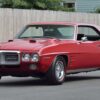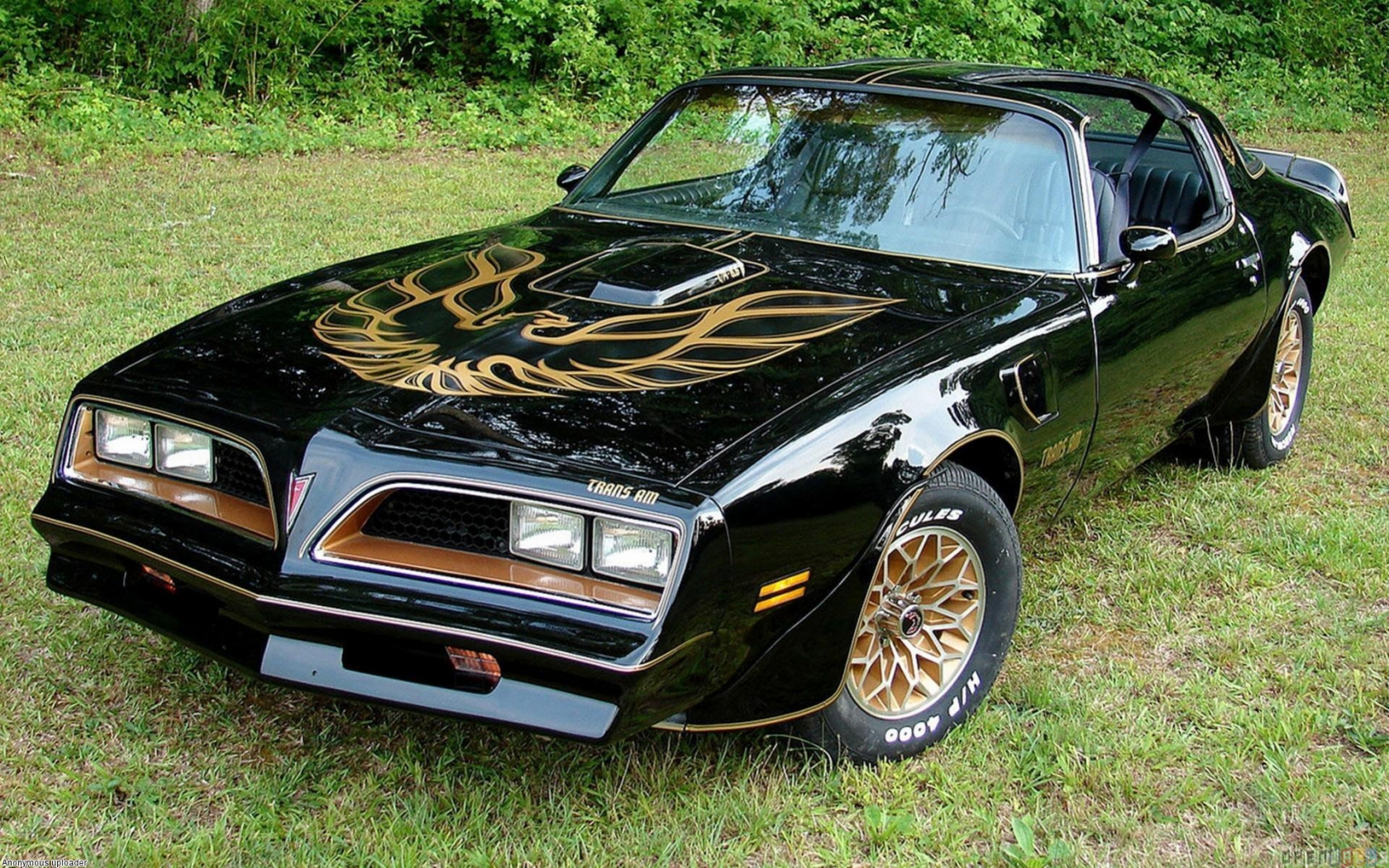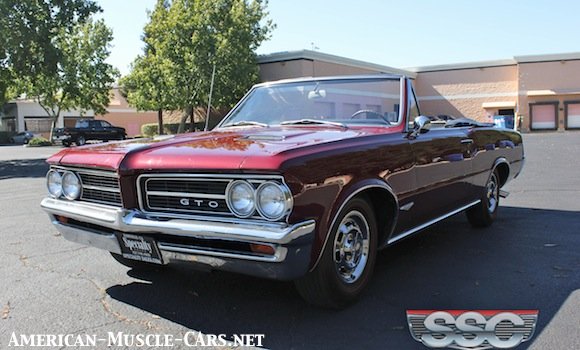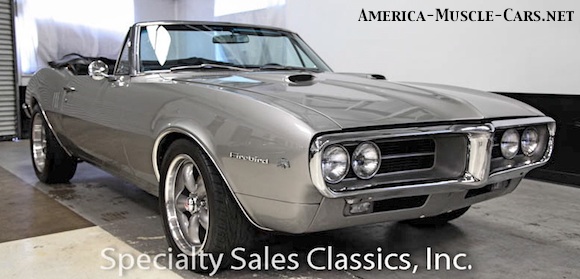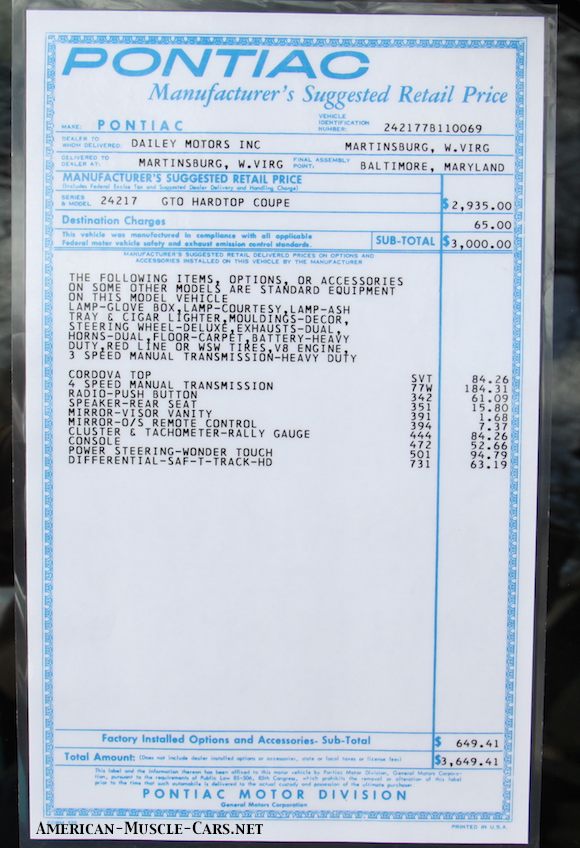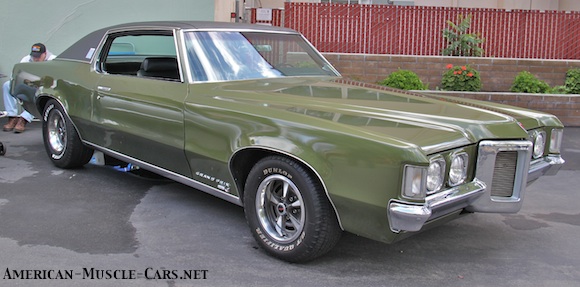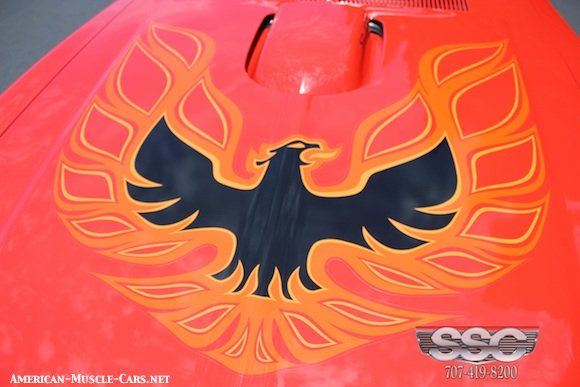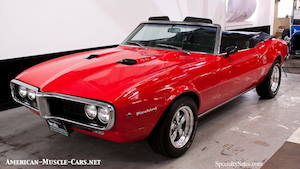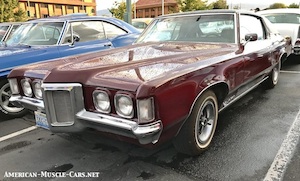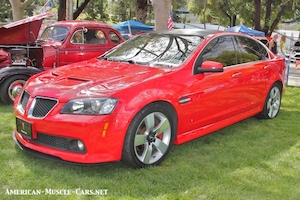Pontiac Muscle Cars
WE LOVE PONTIAC MUSCLE CARS!

1965 Pontiac GTO. The Tempest/Lemans was the foundation for the might GTO. But the formula was simple: light mid-sized car + big engine = Muscle Car.
PONTIAC MUSCLE CARS
PONTIAC INVENTS THE MUSCLE CAR
Horsepower had been steadily rising for well over a decade, with everyone in Detroit fielding a V8 engine, and those engines growing in displacement and output with each new model year. By the 1960s, there was a general move away from full-size cars and into mid-sized and compact cars. “Economy Cars” were, for the first time, being taken seriously (only Rambler made then before that). The winds of change were blowing, and a new market, “the Youth Market” was opening up. Many in Detroit failed to see it coming. Most wanted to just continue building what they had always built. But a young engineer at Pontiac not only saw it, but came up with a plan to capitalize on it.
PONTIAC MUSCLE CARS
DELOREAN WORKS HIS MAGIC
Delorean’s idea was actually fairly simple: Take a big V8 engine, one that GM had designed for full-sized cars (like the Pontiac Catalina and Pontiac Bonneville), then cram it into a lightweight mid-sized chassis, spiff it up a bit, then give it a cool name. The engine was the 389 V8, the car was the mid-sized Pontiac Tempest, and the result was the Pontiac GTO. It was just the first of a long line of Pontiac Muscle Cars. But it wasn’t that easy. Because GM was dead set against the idea, not wanting to put big-car engines into small cars, and they nixed the plan. Undaunted, Delorean simply outmaneuvered the GM brass. Instead of making the GTO an actual model, he instead made it an ‘option package’ for the Tempest. It was an instant hit, and it caused a sensation throughout the industry and the marketplace. GM never looked back. Suddenly everyone wanted one, or something like it. And every manufacturer rushed to cobble together their own ‘Muscle Car’. And thus began the first American Muscle Car Era.
BELOW: 1964 was the first year for the GTO, and the only square-bodied GTO with side-by-side headlights.
PONTIAC MUSCLE CARS: IT’S ALL ABOUT THE ENGINES!
ABOVE: 389 TRI-POWER Well, that’s not exactly true. With Pontiacs, it’s always been about the handling also, perhaps more so than any other maker of Muscle Cars of the day. However, it was still about those engines! Above is a sweet 389 Tri-Power from a ’65 GTO.
ABOVE: 1967 PONTIAC GTO, the last of the square-bodies. Starting in ’68, they’d get all curvy. Despite their ‘mid-size’, these are big cars by today’s standards.
BELOW: Below is the reproduction window sticker from the car above. Check out those prices.
GRAND PRIX: THE LUXURY MUSCLE CAR
ABOVE: 1968 PONTIAC GRAND PRIX The Grand Prix was typical of the ‘Personal Luxury Car’, similar in mission to a Cadillac Eldorado, a Buick Riviera, a Ford Thunderbird, or a Chevy Monte Carlo. But Pontiac jammed all sorts of hot big blocks under the hoods.
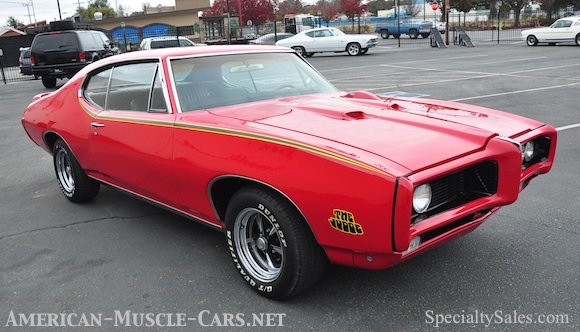
ABOVE: 1968 PONTIAC GTO JUDGE. This was a great time for Pontiac Muscle Cars. The “Judge” package was meant to capitalize on the popularity of a Sammy Davis Jr. character on the late 60s comedy variety show, Laugh In, who used to say “Here comes the judge!”
PONTIAC MUSCLE CARS
BUILDING ON SUCCESS
Very quickly, Pontiac adopted an image its the “Excitement Brand” at GM, a welcome change after decades of stodgy ‘old-man cars’. One hit followed another. The GTO sold like hotcakes, and acted as a ‘Halo Car’ for the rest of the brand, including more mundane Tempests (the base car for the GTO). But they had plenty of other great cars that sold well throughout the 1960s, like the LeMans, the Grand Prix and soon the Firebird and Trans Am. These were the “Wide-Track Pontiacs”, another brilliant marketing coups by John Delorean. During these years, Pontiac developed a reputation for fast, powerful Muscle Cars that held together well even under constant abuse.
BELOW: 1975 PONTIAC TRANS AM These huge hood decals became affectionately known as “The Screaming Chicken”. But no one was laughing at the power. Trans Ams were just about the only fast cars left by 1975.
ABOVE: 1978 PONTIAC TRANS AM These Gold Special Editions were among the most beautiful cars of all time, in my humble opinion. These late-2nd gen Firebirds were big tanks, but still pretty fast, with a 403 Olds engine replacing the old Pontiac 400 (couldn’t get it to smog). Pontiac was just about alone in building muscle cars in the 1970s.
PONTIAC MUSCLE CARS
LEADING THE WAY IN THE BAD 1970s
The peak of the first American Muscle Car Era was in 1970, along with horsepower ratings. From then on, for the next decade or so, it was all downhill from there. Horsepower was in the toilet. It got so bad that Chevrolet stopped offering the Z28 package on their Camaros from 1975 to 1976. Personal luxury cars like the Chevy Monte Carlo, the Ford Grand Torino, and the Pontiac Grand Prix were where the now-older ‘youth market’ was heading, their performance days behind them, now that they were getting married and starting their careers. But, Pontiac wasn’t quite ready to give up on Muscle Cars just yet. And in fact, through most of the 1970s, Pontiac was just about alone in the production of honest-to-goodness muscle cars. Basically, we’re talking about Trans Ams here. Since the specific output (horsepower per cubic inch) was headed south, Pontiac simply added more cubic inches. Their big block V8 by this time had grown to 455 cubic inches, and with a little massaging, became the 455 H.O. (short for High Output). Later in the 70s, as emissions regs tightened up still further, Pontiac felt it was easier getting the power and low emissions out of an engine they borrowed from Oldsmobiles’ parts bin, the 403, which became known as the 6.6 (meaning it displaced 6.6 liters, or 403 cubic inches). In the 1970s, if you wanted a new car that would still smoke the tires, and beat any other new car on the road, you bought a Pontiac Trans Am. The “Smokey and the Bandit”-movies, starring Burt Reynolds, helped catapult the Trans Am into even higher sales, as it loomed high in the public’s consciousness, with it’s black paint job, trimmed in gold with a huge gold “Screaming Chicken” on the hood. Gaudy yes, but it worked, and those black-and-gold “Smokey Trans Ams” are still very popular with collectors and enthusiasts today.

The 2002 Pontiac Trans Am. By this time they came with a 5.7 liter LS1 straight out of a Corvette, and they were fast. And they handled remarkably well for a car with a live rear axle. But alas, it was all for naught, because the following year, 2003, would be the death knell for the Firebird and the Camaro.
PONTIAC MUSCLE CARS
APPROACHING THE END
The 3rd-generation of Pontiac Firebirds and Trans Ams ended with the 1992 model year. The 4th-gen cars ushered in not just a new generation of body styles, but also a new generation of engine technology. In 1992, the hottest engine you could get in the Pontiac Trans Am was the 5.7 TPI with 245 hp. The very next year, the TPI was replaced by a whole new engine, still a small block, but named the LT1, and with it a whole range of improvements (better engine control systems, a more sophisticated ECU (Engine Control Unit, ie: the computer), fuel injection, reverse-flow cooling and more. It was rated at 375hp, 25hp less than the Corvette with the same basic engine (the exhaust flowed better in the Vette, hence the 25hp bump). But within a couple of years, the Trans Am’s horsepower crossed the 400-mark and kept climbing. Unfortunately, the writing was on the wall by the turn of the century, as GM continued to spew red ink from every pore. Something had to be done, and cutting out redundant, or slow-selling models was one of the first moves. Both the Chevy Camaro and the Pontiac Firebird and Trans Am were cut after the 2002 model year. The next year (2003) GM killed the entire Oldsmobile brand. A few years later, in 2008, when the economy went in the tank and once again GM had to cut down its plethora of divisions. As part of the government-mandated downsizing, GM cut Saturn, Hummer, Saab, and sadly Pontiac. It was the end of a dynasty of Pontiac Muscle Cars. May they rest in peace.
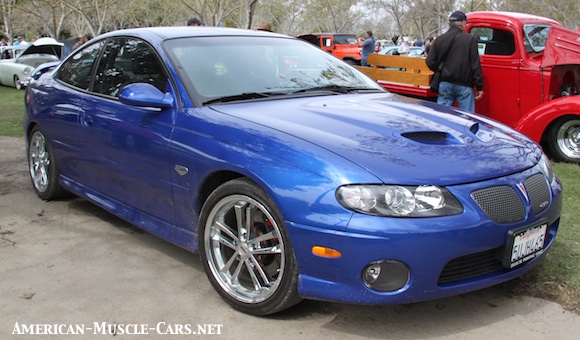
MODERN-DAY PONTIAC MUSCLE CARS
Pontiac never stopped building great cars, right up until the end. The G8 and the GTO were both imported by Pontiac from GM’s Holden brand in Australia. Above is a 2006 Pontiac GTO, and below is its engine. These cars are so discreet that you may think you’re sitting at the light next a Grand Am. But these babies pack a Corvette-derived V8 that will blow most high-performance cars into the weeds! Alas, even this wasn’t enough to save poor Pontiac. In 2009, it became a victim of the government bailout & bankruptcy, and the entire Pontiac division was axed. At least they left behind a legacy of dazzling Pontiac Muscle Cars for us to admire and enjoy for eons to come.
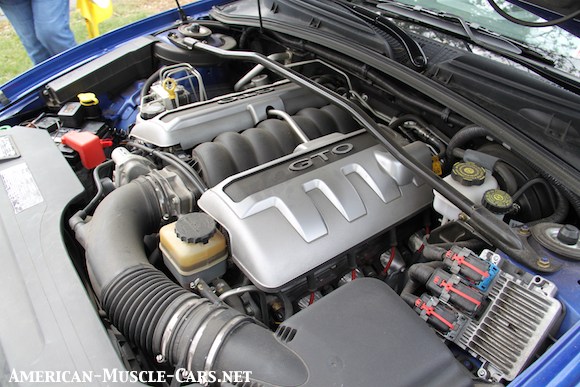
Pontiac Muscle Cars MODEL-BY-MODEL
PONTIAC GTO, 1964-1972
Credited with touching off the First American Muscle Car Era in ’64, the GTO set the formula for every muscle car to follow: big engine + lightweight mid-size body + MUSCLE!!! Stroll through this year-by-year index.
Built on the F-body platform in common with the Chevy Camaro, the Firebird went through 4 Generations and became a legend, the most legendary of which being the mighty Trans Am.
The Pontiac Trans Am was the ruling muscle car of the last 1970s. Star of “Smokey & the Bandit” and a top-seller for Pontiac.
The ‘Personal Luxury Car’ that had the guts to be called a ‘Performance Car’. Loads of luxury, tons of style and attitude, and gobs of power. What a combination!
Built on the same platform as the Holden Commodore (GM Australia) it was Pontiac’s last gasp. Big 6-liter LS V8, style, handling & quality. Unfortunately, it wasn’t enough to save Pontiac.




